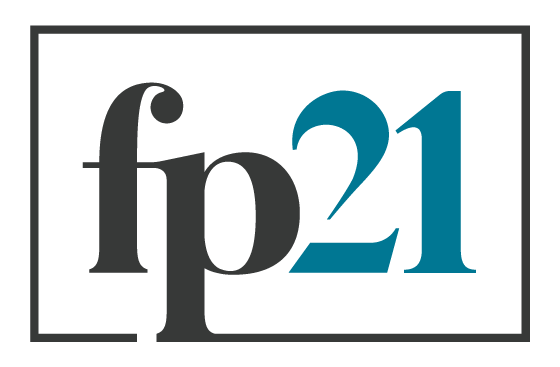Congressional Commission to Reform the State Department
This article originally appeared in Just Security
The State Department Reform Commission: A Once in a Generation Opportunity to Reform American Diplomacy
By Dan Spokojny | Sep 30, 2024
The complexities of an international order under strain, rising competition among major powers, creeping authoritarianism, and the head-spinning pace of technological change – American foreign policy faces significant challenges in the decades ahead. But none of these challenges can be met without an institution capable of implementing U.S. foreign policy effectively.
Unfortunately, few believe the U.S. State Department – ostensibly the lead institution of U.S. foreign policy – is performing up to expectations. Be they career diplomats or outside observers, Democrats or Republicans, hawks or doves, everyone seemingly wants better from the Department.
Enter the Congressional Commission on Reform and Modernization of the Department of State. Authorized in 2023 and fully funded in 2024, the establishment of the Commission represents a rare bipartisan consensus: the State Department remains an essential asset for U.S. national security but needs revitalization.
Originally proposed by Senators Bill Hagerty (R-TN) and Ben Cardin (D-MD), the Commission will include 16 experts from both sides of the aisle to “examine the changing nature of diplomacy and the ways in which the Department can modernize to advance the interests of the United States.”
True reform and modernization require bold new ideas. Here are four questions the Commission needs to consider to set itself on a successful path.
What is the State Department’s primary role?
The Commission should begin its work by articulating a coherent vision of the State Department’s proper role in the U.S. national security apparatus. Should the Department of State assume the role of lead designer of U.S. foreign policy? Or should it defer strategic thinking to the National Security Council and others, and focus more on the execution of U.S. foreign policy?
Today’s State Department suffers from bureaucratic schizophrenia, split between these two identities, leader versus implementer. It does not train its staff to be grand strategists, nor does it prepare them to be technocratic project managers. It under-invests in training and developing the sort of Washington political acumen and close contact with Congress that effective high-level policymaking requires, but its ranks also chafe against political appointees in its midst who often fill that role.
A modernized State Department will need to walk and chew gum, so to speak, for maximum effectiveness. The Department must also be nimble in supporting different presidents with very different styles and demands. Nevertheless, the Commission would be wise to prioritize its work against a strong vision of the State Department’s appropriate role within the national security apparatus.
What legal authorities are necessary?
The Foreign Service Act of 1980 was the last major piece of legislation to affect the State Department. Some tweaks have been made since then, but the State Department’s legal authorities are fragmented and badly outdated.
As more and more agencies station representatives abroad – from Homeland Security to the Department of Agriculture – an ambassador’s “chief of mission authority” is becoming strained. Ambassadors are supposed to coordinate and direct all executive branch personnel (with narrow, defined exceptions) and every activity that happens in the country to which they were appointed, but their weak authority often makes it impossible for them to unify the disparate actors.
The power distribution between the State Department’s so-called regional bureaus responsible for bilateral relationships and the functional bureaus tasked with leading globalized issues such as human rights or climate change is another key question for the Commission. The regional bureaus currently hold the preponderance of authority at the Department, resulting in a prioritization of bilateral relations (e.g. relations with China) over cross-cutting challenges (e.g. global pandemic response).
Congress also legislates the structure and resources of the State Department. The steady growth in the size and number of bureaus and responsibilities at the Department reflects the Department’s importance in managing an increasingly complex world – but it can also lead to an inability to prioritize between competing mission requirements. Many agree that the accretion of layers of hierarchy in the bureaucracy slows and waters down the policymaking process at the Department. Some blame unfunded or underfunded mandates and budgetary inflexibility for neutering diplomacy’s effectiveness as an instrument of national security in the United States.
These questions about legal authorities may raise deeper questions about the platforms (embassies, technologies, etc.) that are necessary to support and advance the State Department’s mission in the 21st century.
What does effective decision-making require?
Writing in Foreign Policy in 1970, Richard Holbrooke memorably called the Department of State “the machine that fails.” More recently, before he assumed the job of Deputy National Security Advisor, Jon Finer and prominent coauthor Uzra Zeya, currently an Under Secretary of State, cited the State Department’s “lousy reputation for policy effectiveness.” They join a long line of officials stretching from the end of World War II until today whose experience in Foggy Bottom has convinced them of the Department’s glaring weaknesses.
Whereas the intelligence community has tradecraft, and the Department of Defense has doctrine, there is no comparable body of knowledge and practice for diplomacy. The methods that policymakers use today to craft and execute foreign policy are ad hoc and subjective; “the art of diplomacy,” it is called.
Techniques for analysis, strategy, and risk management have transformed the corporate world, in stark contrast to the policy process at the State Department, which is bureaucratic and risk-averse; “a bowl of jelly,” in the words of former President John F. Kennedy. Scholars have identified two key ingredients for building expertise: designing feedback mechanisms and facilitating opportunities for training and learning. Whereas diplomacy has been described as “the art of telling someone to go to hell in such a way that they ask for directions,” when I feel most cynical, I suggest that American diplomacy is “the art of setting ambiguous goals and always claiming success.”
Improved decision-making processes at the State Department would not offer a magic wand to solve all the world’s problems. But by laying the foundation for a doctrine for diplomacy and codifying best-practices, Congress might improve the quality of U.S. diplomacy in a number of ways. Doctrine is vital for high-quality training; doctrine is, according to the Army, “the approved body of knowledge that is taught.” Doctrine for decision-making would also help harmonize the knowledge management, analysis, and strategy processes across the State Department’s many bureaus and offices, which are currently conducted in idiosyncratic and ad hoc ways. Ultimately, the guiding light for such doctrine would be to help the State Department more effectively advance its mission and achieve US foreign policy goals.
What workforce is required for 21st-century foreign policy?
An adage tells us that “personnel is policy.” Choices about hiring, recruiting, promotion, and job assignment procedures are some of the most important policy decisions the organization makes. The State Department requires a skilled and well-equipped workforce to effectively serve the country.
Yet today’s antiquated personnel system may not be up to the task. The State Department’s hiring system is an irrational tangle of job categories: Foreign Service, Civil Service, Schedule A, B, C, contractors, and more. Managers at the State Department complain about counterproductive constraints on hiring and firing, making it difficult to harmonize personnel with a rapidly evolving global landscape.
Once hired, employee evaluation and promotion procedures take up immense time and resources. Yet the process is widely criticized, seen as more of a creative writing competition than a sober examination of merit. Updating and rationalizing the Department’s myriad hiring mechanisms could be an important opportunity for reform.
Many believe that maintaining an experienced career diplomatic corps is vital to acculturating officials into apolitical, expert-driven service. At the same time, democracy relies on the ability of a country’s politicians to effectively control the unelected bureaucrats they were elected to lead. A plan initiated by former President Trump would make it easier to control executive agencies by reinstating Schedule F authority and making it easier to fire tenured civil servants (and thus easier to replace them with those who exhibit personal loyalty to the President). Defenders of career diplomacy have cried foul. The resulting politicized debate has overshadowed a gripe from presidents of both parties about their inability to control the State Department and the increasing reliance on political appointees and the National Security Council to advance presidential priorities. Invigorating careerists and bolstering responsible executive command ought not be opposing goals; the Commission might be positioned to identify a more productive path forward.
The stakes are high
Despite institutional weaknesses, diplomacy does often succeed, including in the most high-stakes situations imaginable. Wars are averted, despots are defanged, and human rights champions are empowered. Diplomacy remains an essential tool for U.S. national security, and its officials possess deep knowledge, experience, and relationships.
Yet, all of the State Department’s extraordinary human capital somehow seems to add up to less than the sum of its parts. This shortfall weakens the quality of US foreign policy, and increases the risk of catastrophic mistakes during this fragile geopolitical era we have entered.
The next president – not to mention the American people and all of those affected by U.S. foreign policy – will require a State Department that can effectively carry out its vision. The Commission to Reform and Modernize the State Department has a historic opportunity to build something better. Let’s make sure to get it right.


